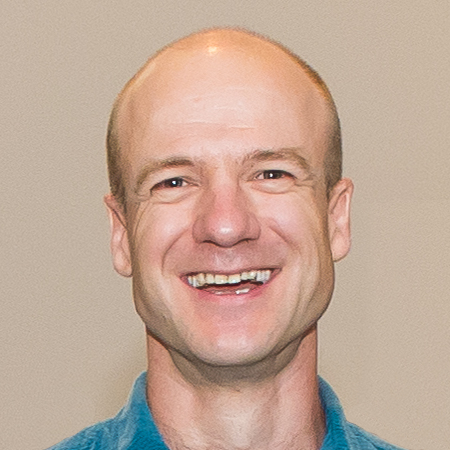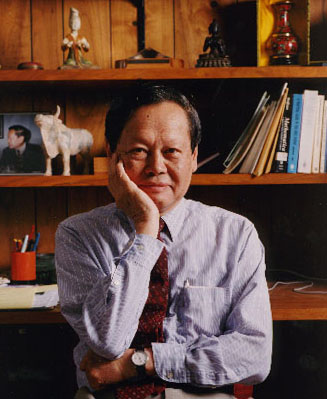
MATTHEW DAWBER
Adjunct Professor
Physics and Astronomy
matthew.dawber@stonybrook.edu | Physics P-102 | 631-632-4978, Physics B-104
Research Group Website
Biography
Matt Dawber has been on the faculty at Stony Brook since 2008. Prior to that he was
a postdoctoral associate at the University of Geneva from 2004-2008, having completed
his PhD at the University of Cambridge from 2000-2003. If you hear him talk it won't
take you too long to realize he is orginally from Sydney, Australia.
Research Statement
Matt Dawber's group in the Department of Physics and Astronomy at Stony Brook University
is focused on the growth, characterization and understanding of ferroelectric materials
and other oxides. Besides a general interest in ferroelectric materials the focus
in this lab is on producing superlattice materials where interfacial coupling gives
rise to either enhanced or totally new behaviour. Ferroelectric materials possess
high degrees of functionality, with highly exploitable electrical, mechanical and
optical properties. As the most studied ferroelectrics are transition metal oxides
with perovskite crystal structure their integration into heterostructure devices with
other transition metal oxides with different but equally exciting properties (e.g.,
magnetism and superconductivity) is a direction that shows enormous potential for
both exciting physics and breakthrough devices.
A general review of the physics of ferroelectric oxide thin films can be found at:
Dawber M, Rabe KM, Scott JF, Reviews of Modern Physics 77 1083 (2005).
There is also a recent book from Springer that covers a broad range of topics in ferroelectrics
from a modern viewpoint: Physics of Ferroelectrics, A Modern Perspective (Topics in Applied Physics, Vol 105,
(2007) eds. Rabe KM, Ahn CH, Triscone JM.
Ferroelectrics are also important materials for non-volatile memory applications,
and this topic is well covered in: Ferroelectric Memories, Scott JF, Springer 2000
Highlight PublicationsCooperative Interactions between Surface Terminations Explain Photocatalytic Water Splitting Activity on SrTiO3 Vidushi Sharma, Benjamin Bein, Amanda Lai, Betül Pamuk, Cyrus E. Dreyer, Marivi Fernández-Serra, and Matthew Dawber SrTiO3 is a highly efficient photocatalyst for the overall water splitting reaction under UV irradiation. However, an atomic-level understanding of the active surface sites responsible for the oxidation and reduction reactions is still lacking. Here we present a unified experimental and computational account of the photocatalytic activity at the SrO and TiO2 terminations of aqueous solvated [001] SrTiO3. Our experimental findings show that the overall water-splitting reaction proceeds on the SrTiO3 surface only when the two terminations are simultaneously exposed to water. Our simulations explain this, showing that the photogenerated hole-driven oxidation primarily occurs at SrO surfaces in a sequence of four single hole transfer reactions, while the TiO2 termination effects the crucial band alignment of the photocatalyst relative to the water oxidation potential. The present work elucidates the interdependence of the two chemical terminations of SrTiO3 surfaces, and has consequent implications for maximizing sustainable solar-driven water splitting. Role of ferroelectric polarization during growth of highly strained ferroelectric materials Rui Liu, Jeffrey G. Ulbrandt, Hsiang-Chun Hsing, Anna Gura, Benjamin Bein, Alec Sun, Charles Pan, Giulia Bertino, Amanda Lai, Kaize Cheng, Eli Doyle, Kenneth Evans-Lutterodt, Randall L. Headrick, Matthew Dawber Nature Communications 11 2630 (2020) doi:10.1038/s41467-020-16356-9 (Open Access) In ferroelectric thin films and superlattices, the polarization is intricately linked to crystal structure. Here we show that it can also play an important role in the growth process, influencing growth rates, relaxation mechanisms, electrical properties and domain structures. This is studied by focusing on the properties of BaTiO3 thin films grown on very thin layers of PbTiO3 using x-ray diffraction, piezoforce microscopy, electrical characterization and rapid in-situ x-ray diffraction reciprocal space maps during the growth using synchrotron radiation. Using a simple model we show that the changes in growth are driven by the energy cost for the top material to sustain the polarization imposed upon it by the underlying layer, and these effects may be expected to occur in other multilayer systems where polarization is present during growth. This motivates the concept of polarization engineering as a complementary approach to strain engineering. In-situ x-ray diffraction and the evolution of polarization during the growth of ferroelectric superlattices Benjamin Bein, Hsiang-Chun Hsing, Sara J. Callori, John Sinsheimer, Priya V. Chinta, Randall L. Headrick, Matthew Dawber Nature Communications 6 10136 (2015) doi:10.1038/ncomms10136 (Open Access) In epitaxially strained ferroelectric thin films and superlattices, the ferroelectric transition temperature can lie above the growth temperature. Ferroelectric polarization and domains should then evolve during the growth of a sample, and electrostatic boundary conditions may play an important role. In this work, ferroelectric domains, surface termination, average lattice parameter and bilayer thickness are simultaneously monitored using in-situ synchrotron x-ray diffraction during the growth of BaTiO3/SrTiO3 superlattices on SrTiO3 substrates by off-axis RF magnetron sputtering. The technique used allows for scan times substantially faster than the growth of a single layer of material. Effects of electric boundary conditions are investigated by growing the same superlattice alternatively on SrTiO3 substrates and 20nm SrRuO3 thin films on SrTiO3 substrates. These experiments provide important insights into the formation and evolution of ferroelectric domains when the sample is ferroelectric during the growth process. This manuscript is also available on the arxiv: http://arxiv.org/abs/1502.07632 Extrinsic and Intrinsic Charge Trapping at the Graphene/Ferroelectric Interface M.H. Yusuf, B. Nielsen, M. Dawber, and X. Du The interface between graphene and the ferroelectric superlattice PbTiO3/SrTiO3 (PTO/STO) is studied. Tuning the transition temperature through the PTO/STO volume fraction minimizes the adorbates at the graphene/ferroelectric interface, allowing robust ferroelectric hysteresis to be demonstrated. “Intrinsic” charge traps from the ferroelectric surface defects can adversely affect the graphene channel hysteresis and can be controlled by careful sample processing, enabling systematic study of the charge trapping mechanism. This paper is also available on the arXiv at: http://arxiv.org/abs/1408.6169
|
Current Research ProjectsResearch in our lab is currently supported by the C2QA and a seed grant from Stony Brook OVPR. Past Research ProjectsThese completed projects were funded by the National Science Foundation: DMR-1506930 -- Real-time X-ray Scattering Studies of Oxide Epitaxial Growth |


